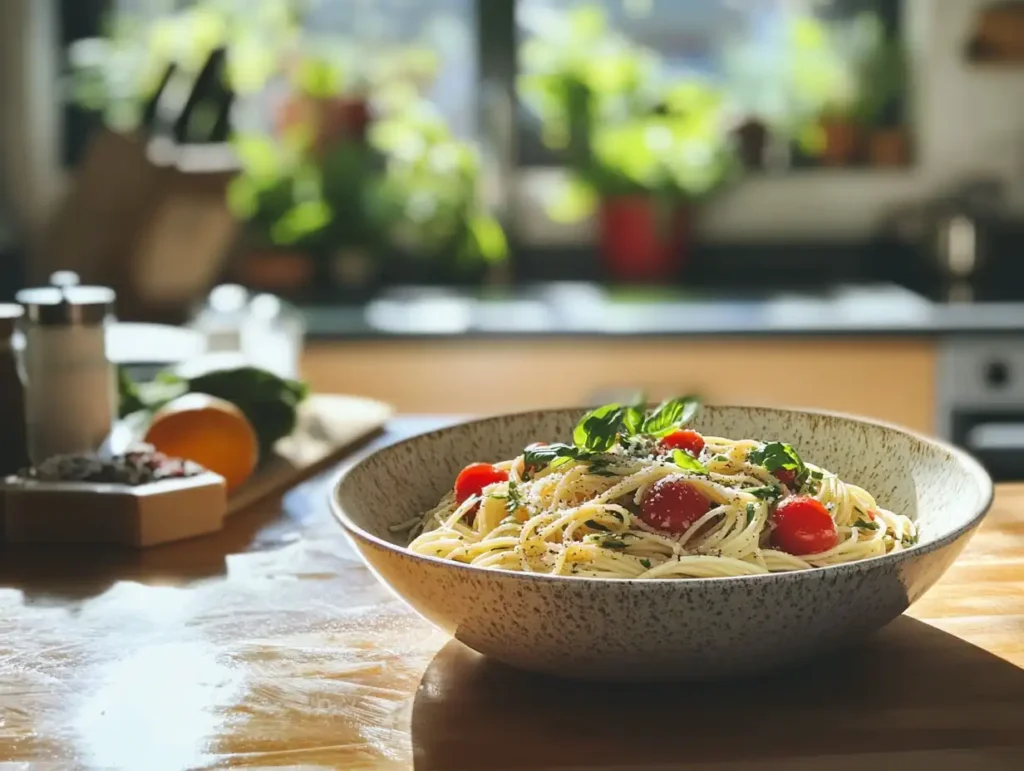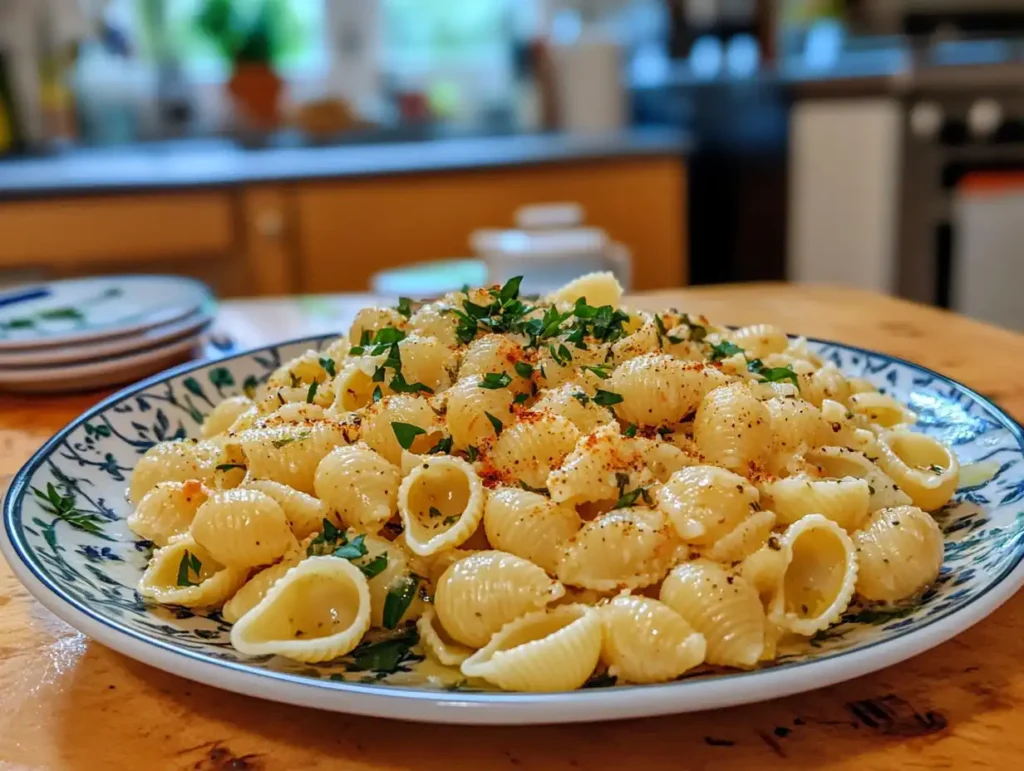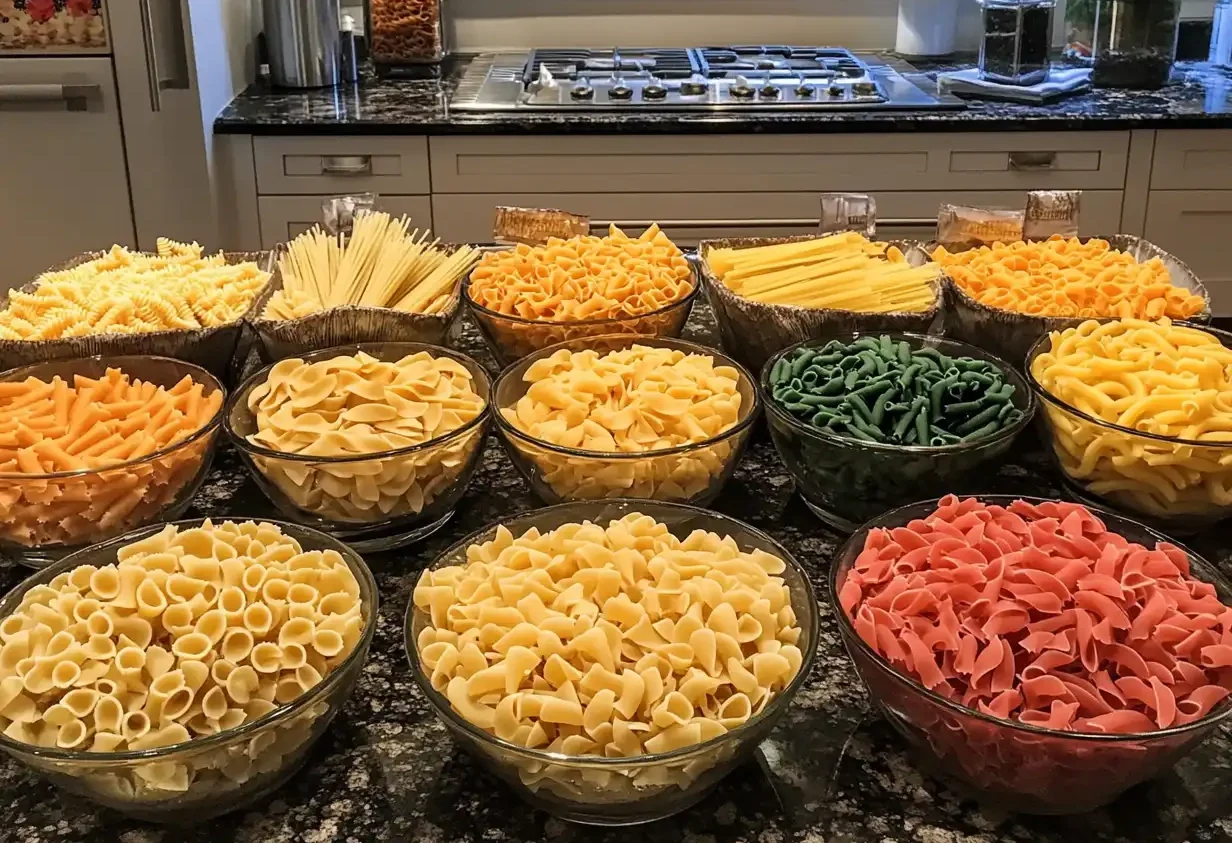Table of contents
Ditalini pasta, known for its small tubular shape, is a favorite for soups and salads. But what is the closest pasta to ditalini when it’s unavailable? Thankfully, several options like tubetti, small shells, and orzo can serve as substitutes, ensuring your dish turns out just as delicious.
This article explores the best substitutes for ditalini pasta, including tubetti, elbow macaroni, small shells, orzo, and acini di pepe. We’ll also discuss how to choose the most appropriate replacement based on your recipe, cooking tips for substitutes, and how to adapt recipes without compromising taste or texture.
Introduction
Ditalini, meaning “small thimbles” in Italian, is a beloved pasta shape. Its small size and hollow design make it a favorite for dishes where texture and consistency are key. Yet, even the best-stocked kitchens might occasionally run out of this versatile pasta.
When substituting ditalini, it’s essential to consider the role it plays in your recipe. Whether you need a similar texture for a classic Italian soup or a pasta salad, choosing the right replacement ensures the dish maintains its original charm. This article delves into ditalini’s characteristics and provides an in-depth guide to finding and using What Is Ditalini Pasta?
Characteristics of Ditalini
Ditalini pasta is easily recognizable by its small, short, and tubular shape, resembling tiny thimbles. The word “ditalini” itself translates to “little thimbles” in Italian. Measuring roughly half an inch long, this pasta is typically made from durum wheat, giving it a firm texture that holds up well during cooking.
The hollow center of ditalini allows it to trap liquids and small ingredients, making it an ideal choice for soups like minestrone or pasta e fagioli. Its shape is also perfect for cold pasta salads or as a component in hearty casseroles where the pasta adds bulk without overpowering the dish.
Heading 3: Why Ditalini Is Popular
Ditalini has earned its place in kitchens worldwide because of its versatility and ability to blend seamlessly with a variety of ingredients. It cooks quickly, making it a time-saving option for busy cooks. Its neutral flavor allows it to absorb and complement robust sauces, delicate broths, or tangy dressings.
Another reason for its popularity is its portion-friendly size. Ditalini is particularly appealing in dishes where bite-sized pasta pieces are preferable, offering a balanced ratio of pasta to other ingredients. Whether you’re making a hearty winter soup or a refreshing summer salad, ditalini consistently delivers satisfying results.
Closest Substitutes for Ditalini

Tubetti Pasta
Tubetti is often considered the most direct substitute for ditalini. Like ditalini, tubetti is a small, tubular pasta shape with a similar size and structure. Its compact, hollow form makes it an excellent choice for soups, especially those that call for ditalini.
When substituting ditalini with tubetti, you can use a 1:1 ratio without making adjustments to the cooking time or recipe steps. Tubetti’s texture and ability to hold sauces and broths ensure your dish remains authentic to the original recipe.
Elbow Macaroni
Elbow macaroni, a common pantry staple, is another great alternative to ditalini. Though it has a slightly curved shape, its size and hollow center allow it to perform similarly in recipes. Elbow macaroni is widely available, making it a convenient choice when ditalini isn’t an option.
To use elbow macaroni as a substitute, replace it in equal amounts. Keep in mind that the curved shape may slightly alter the dish’s presentation, but the overall taste and texture will remain unaffected.
Small Shells (Conchigliette)
Small shells, or conchigliette, are another excellent substitute for ditalini. Their unique shell-like shape provides a similar bite-size texture, making them ideal for soups, salads, and casseroles. The concave form of small shells allows them to capture sauces, broths, or small ingredients, mimicking ditalini’s functional appeal.
When using small shells, keep in mind that they may take slightly longer to cook compared to ditalini. It’s essential to taste-test during cooking to achieve the perfect al dente texture. Small shells shine in creamy pasta dishes and hearty soups, offering a delightful twist on traditional recipes.
Orzo
Orzo, a rice-shaped pasta, may seem like an unconventional substitute for ditalini, but it works surprisingly well in many recipes. Although it lacks the hollow center of ditalini, its small size and smooth texture make it a suitable alternative, especially in soups or salads where you need a delicate and uniform consistency.
To substitute orzo for ditalini, use an equal quantity by volume. Since orzo is smaller and denser than ditalini, it cooks faster, so adjust the cooking time accordingly. Orzo is particularly useful in lighter dishes where its sleek appearance adds an elegant touch.
Acini di Pepe
Acini di pepe, meaning “peppercorns” in Italian, is a tiny spherical pasta that closely matches ditalini’s ability to blend seamlessly into soups and broths. Though it lacks the tubular structure of ditalini, its small size makes it a practical substitute in recipes where the pasta serves as a supporting ingredient.
Because acini di pepe is smaller than ditalini, you may need to use slightly more by volume to achieve the same texture and consistency. It cooks quickly, so monitor it closely during preparation. This substitute works best in soups and stews where tiny pasta pieces are desirable for even distribution.
Factors to Consider When Choosing a Substitute

Recipe Context
The context of your recipe plays a crucial role in selecting the right substitute for ditalini. For instance, in soups, it’s essential to choose a pasta that won’t overwhelm the broth or overshadow other ingredients. Tubetti, small shells, or acini di pepe are excellent options here.
For pasta salads, you might prioritize a shape that complements fresh vegetables or creamy dressings. Elbow macaroni or small shells often work best in these dishes. Considering the balance of flavors and textures ensures your recipe retains its intended character.
Cooking Time
Cooking time can vary significantly among ditalini substitutes. For example, orzo and acini di pepe typically cook faster than ditalini, while small shells may take a bit longer. Understanding these differences helps you adjust your recipe steps to avoid overcooking or undercooking the pasta.
It’s always a good idea to taste-test your pasta during cooking. Achieving the ideal al dente texture is crucial for maintaining the overall quality of your dish.
Factors to Consider When Choosing a Substitute (Continued)
Availability
One of the most practical factors when choosing a substitute is the availability of pasta types. Ditalini is not always readily available in every region, but many of its substitutes, such as elbow macaroni or small shells, can often be found in local grocery stores.
For specialty options like tubetti or acini di pepe, you may need to visit an Italian market or explore online retailers. If time is of the essence, opt for a commonly stocked pasta type, even if it’s not a perfect match in shape. The goal is to maintain the essence of the dish, and most small pasta shapes can achieve that.
How to Adapt Recipes with Substitutes
Adjusting Quantities
Different pasta shapes can vary in density, which means you may need to tweak the quantities when substituting ditalini. For instance, smaller shapes like acini di pepe or orzo may require slightly more pasta by volume to achieve a similar texture and balance in your dish.
To maintain accuracy, measure the substitute pasta by weight if possible. Start with the same amount as the recipe calls for and adjust based on your taste and the dish’s appearance. For soups, ensure the pasta doesn’t overpower the broth. For salads, aim for an even distribution with other ingredients.
Sauce Pairing Tips
Choosing the right sauce or broth is essential when using a substitute for ditalini. Tubular shapes like tubetti or elbow macaroni work exceptionally well with thicker sauces, as they can hold more of the flavor. On the other hand, smaller pasta like orzo or acini di pepe is better suited for lighter broths or vinaigrettes.
When adapting recipes, consider how the substitute’s texture interacts with the sauce. A creamy dressing, for instance, pairs beautifully with small shells, while tomato-based broths are ideal for orzo or tubetti. Matching the pasta’s surface area and structure to the sauce enhances the overall eating experience.
Ensuring Proper Cooking
Cooking substitutes to the correct doneness is critical to achieving the desired texture in your dish. Most small pastas cook quickly, so it’s important to monitor them closely. Undercooked pasta can feel hard and out of place, while overcooked pasta may lose its shape and become mushy.
If you’re preparing a dish with extended cooking times, such as casseroles or stews, consider slightly undercooking the pasta before incorporating it into the recipe. This ensures it finishes cooking during the final stages without becoming overly soft.
FAQs
Can I use any pasta to replace ditalini?
While almost any pasta can technically be used to replace ditalini, it’s essential to consider the recipe’s purpose. For example, larger pasta shapes like penne or rigatoni may not be suitable for soups or salads where small pasta works best. Instead, opt for substitutes like tubetti, small shells, or elbow macaroni, which closely match ditalini’s size and versatility.
Which pasta works best for soups?
For soups, the best substitutes for ditalini are tubetti, acini di pepe, or orzo. These options are small and blend seamlessly with broths, vegetables, and proteins without overpowering the dish. Their size also ensures they cook quickly, making them ideal for hearty soups or quick meals.
Are gluten-free alternatives available for ditalini substitutes?
Yes, many gluten-free pasta options mimic ditalini’s size and texture. Brands often produce small, tube-shaped gluten-free pastas made from rice, quinoa, or lentils. Gluten-free orzo is another excellent alternative for soups or salads. Always check the cooking instructions, as gluten-free pasta may require different preparation times.
How do I maintain the consistency of a recipe with a substitute?
To maintain consistency, focus on the substitute’s cooking time and size. If using a smaller pasta like acini di pepe, you may need to adjust the quantity slightly to balance the dish. Ensure the pasta is cooked al dente and complements the dish’s other ingredients. Pair sauces or broths that match the new pasta’s surface area and ability to hold liquid or sauce.
What’s the best way to cook ditalini substitutes?
Cooking ditalini substitutes is straightforward. Boil the pasta in salted water, following the package instructions for timing. For soups, you can cook the pasta separately to avoid overcooking it in the broth. Add the cooked pasta to the soup just before serving to retain its texture.
Is it better to use rice instead of pasta?
Rice can be a suitable replacement in some cases, particularly in soups where small grains like Arborio or long-grain rice can mimic the texture of ditalini. However, rice lacks the structure of pasta and may absorb more liquid, altering the consistency of the dish. If you choose rice, be mindful of its cooking time and liquid absorption properties.
Conclusion
Ditalini pasta is a beloved choice for its versatility, small size, and ability to blend seamlessly into soups, salads, and casseroles. However, when ditalini isn’t available, several substitutes can fill its role admirably. Tubetti, elbow macaroni, small shells, orzo, and acini di pepe are all excellent alternatives, each offering unique benefits depending on the dish.
When choosing a substitute, it’s essential to consider the context of your recipe. Whether you need a pasta that complements a hearty broth or pairs well with creamy dressings, the right choice ensures your dish retains its intended flavor and texture. Adjusting quantities and cooking times are simple yet crucial steps to making a successful swap.
Experimenting with substitutes can even lead to delightful culinary surprises, as each pasta shape brings its own charm to a dish. So, the next time you find yourself without ditalini, don’t hesitate to explore these versatile replacements. Your recipe and your taste buds will thank you.
Related Recipes and Pasta Inspirations
If you’re exploring ways to use ditalini or its alternatives in recipes, you might enjoy the versatility highlighted in our article on Ditalini Pasta: A Culinary Delight and Versatile Ingredient. Additionally, for a twist on classic pasta dishes, check out Mushroom Spinach Pasta: A Nutritious and Delicious Recipe. For those who enjoy unique pasta flavors, Mexican Green Spaghetti: A Flavorful Fusion of Creamy and Spicy offers a delightful option.
